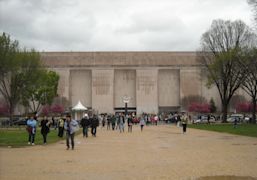Education digital transformation in the modern classroom
Education digital transformation in the education industry benefits both students and faculty. EdTech, short for educational technology, draws upon technology concepts that improve the quality of classroom instruction.
Education digital transformation is the evolution of an organization’s foundational business practices using technology and data. The goal of digital transformation is to better serve customers and streamline business operations. In education, the customers are the students.
Today’s educational practices are modernized through the education digital transformation of both data and technology. The 21st century classroom is transformed through the use of digital whiteboards, online curriculum management systems and specialized tablets.
Education digital transformation requires the thoughtful integration of online infrastructure, knowledge, the empowerment of students, educators, institutions and communities. Discovering innovative solutions and approaches to the way people learn in combination with the best of traditional education are all part of the education digital transformation.
Institutions can leverage technology and data in many different ways. These include using digital avenues like websites, social media, email marketing and more to recruit and retain students in higher education. Education digital transformation provides a way to measure institutional success and make data-driven decisions using big data. Library resources can be digitized and made available online for many students. Mobile apps keep students updated about news, events and other areas of interest to them.
Education digital transformation -- an enhanced student learning experience
The student educational experience will be transformed in the following ways.
- Students can register for admission with either a mobile or Web app.
- They can have access to a wide variety of academic choices.
- Technology is used to track student progress and run intervention protocols.
- Educators, teachers, professors and instructors have the capability to organize online classes.
The increased use of online classes and video conferencing solutions has formed the basis of the drivers of digital transformation in higher education. Students can attend online classes and webinars from wherever they are located. Online courses offer the freedom and flexibility that many non-traditional students crave in their education.
Schools are finding value in digital apps designed for the needs of each institution’s students. A school’s app can be loaded onto a device and used anytime to find important phone numbers, events to attend and maps of the campus. The University of Arizona has an app that can alert students of their meal plan balance. The University of Alabama sends messages about upcoming events and athletics information on their app. Ashford University permits app users to post in class-related discussion forums.
Soon apps could also be used to enhance the student experience on campus by being the go-to tool for everything campus-related. This could include accessing emergency services to contacting a building residential assistant or student adviser. An app could be useful to campus life, notifying students that their laundry is clean or when a professor has decided not to teach a class because of poor weather conditions.
Augmented and virtual reality (AR/VR) is beginning to find acceptance as a way for the education sector to stay current in the ever-evolving world. Students exposed to this interactive visual-audio environment have a better understanding of complex concepts. This technology is already used in lesson plans to bring animals into classrooms or send the entire class to the moon. Architecture students can be transported to a construction site or medical students can visit a hospital.
 Students won't need to leave the classroom to visit historic battlefields like this one with augmented/virtual reality.
Students won't need to leave the classroom to visit historic battlefields like this one with augmented/virtual reality.Adaptive learning is an educational system based upon data analysis that monitors student performance and adjusts each program to match the individual educational needs of each student. Implementing artificial intelligence (AI) in educational software is another way to introduce adaptive learning in the classroom.
Many educational institutions are transitioning into EdTech startups and launching learning apps or platforms for students. For example, as part of the education digital transformation in higher education, students can access their notes, curriculum or take mock tests for exam preparation with the help of educational technology apps. Faculty have the capability of building interactive educational platforms for students to access the best study content in the form of text, PDFs, images, audios and videos.
To meet the changing needs of their students and budget allocation, libraries are embracing education digital transformation. Libraries are digitizing periodicals and books to make them available to many students online. This increases the library’s value and convenience to students and staff.
Chatbots are becoming an alternative teaching tool by converting a lecture into a series of messages that resemble a conversation. The bot can evaluate how much a student understands and absorbs the information presented in each lecture. Besides all the benefits that chatbots offer, they can assist Americans with Disabilities Act (ADA) compliance and are useful to individual students who are unable to talk using a phone.
Students at the University of St. Thomas can access a website widget that allows them to chat with librarians and ask questions about basic research topics. They no longer need to visit the library or pick up the phone to find the information they are seeking.
Botsify is a chatbot that introduces a specific topic to students in the form of images, videos, text or a combination of both. Once the students study any topic, they are then required to take quizzes and submit their answers to the teacher. Educators can also use the bot to track student performance.
Innovative technology solutions
Educators are turning to digital whiteboards that engage the attention of students in either an online or physical classroom. Teachers and professors can use different colors or shapes to explain complicated concepts quickly and easily.
Recent research predicts that the use of AI in the education sector will grow 47.5 percent in the next year. The ability to customize and apply AI solutions in education can save time and improve education efficiency. AI-driven online assessments can be used to identify student learning and retention problems. AI and big data analytics create personalized learning experiences tailored to individual student needs and abilities. AI-powered educational games have the potential to engage students while presenting challenging concepts.
Teaching assistants, the measurement of student performance and Internet of Things (IoT) data all incorporate the use of AI and machine learning. GenZ is used to using AI on platforms such as YouTube, Amazon and Google. This generation craves learning experiences that are adapted to meet their needs anywhere and at any time. Learning Management Systems include AI technology to create learning tools that answer student questions and provide them with step-by-step guides that present information to them in easily understandable and simple terms.
Some schools use IBM Watson’s AI to help first year students adjust to campus life. Watson in Deakin University can answer more than 1,600 questions in real-time about admissions, dorm life, parking permits, financial aid, campus living and getting around town. This small part of education digital transformation helps students adjust to their new way of life. This increases student retention rates and eliminates the stress new freshmen experience in their unfamiliar educational environment.
Yesterday’s hard copy textbooks will be replaced by digital curriculum that will be a mix of activity-based elements and formal instruction. Remote learning and virtual interactions are on the rise in most educational institutions. Schools and universities are using computers and mobile technology to stay connected.
One of the technologies that drive education digital transformation is cloud computing. Students, teachers, professors and instructors can connect with one another on a single, unified platform in a virtual classroom. Live classes and course content are easily accessed anytime and anywhere. Cloud computing is scalable. This technology can manage large numbers of students. In addition, it manages the usage peaks and traffic spikes when students submit multiple assignments at the same time.
There are many tools and software platforms that incorporate the use of big data in education digital transformation. Some tools are used to assess a school’s performance against established learning objectives. Examples are academic results or discipline levels. Big data can alert school administration and staff to slower learners. Previously, the paper test results were the only tools that schools used to identify failing students.
The IoT has paved the way toward smart campuses. Intelligent thermostats control building temperatures. Universities and colleges save money. Students and their professors thrive in a comfortable environment. The University of Michigan-Dearborn saves $21,000 each year after their parking garages replaced traditional lighting with LED. A smart lighting system for an entire campus saves more money.
The education digital transformation of future campuses includes the use of smart kiosks that provide information. Mini smart cities track vehicle and foot traffic and install smart electricity grids. IoT-based security solutions that include remote monitoring and biometric-based authentication can be installed on campuses.
At the university level security is a top-concern to protect student data. The growth in IT and IoT devices has created the need for tighter security measures. Institutions are installing new tools to secure the network from cyber threats. User and entity behavior analytics (UEBA) detect any suspicious activities while monitoring user behavior.
The blockchain is a modern technology that is used to store and transmit information in a distributed and secure manner. Blockchain is used to store student data such as personal data and educational achievement. Security is the primary benefit of this technology. Blockchain reduces a student’s ability to cheat on an exam because of its use to check authenticity. This technology is also used to verify academic credentials, share student records, secure infrastructure networks from hackers and access employment and criminal records.
Education digital transformation is helping colleges and universities comply with the ADA provision for accessibility for everyone. Tools designed for transcription services help hearing-impaired students understand the class lectures they are hearing. Universities are introducing speech recognition and transcription for students who are deaf or hard of hearing. Transcription of lectures helps students with disabilities. Other students can search through transcribed lectures and review them after attending the same lectures in their classes.
Drivers of education digital transformation
Education digital transformation can enhance student experiences by focusing on improving student metrics such as retention and graduation rates. Differentiating one institution from another through digitalization improves institutional competitiveness. Digital transformation of colleges and universities creates a culture of data-driven decision making. This includes adopting a digital mindset for students, faculty and other staff members. The optimization of resources improves communication between administrators and aids in the development of a budget to manage the expenses of the institution. For example, all institutions try to cut costs related to electricity usage
There are two parts to education digital transformation. Services transformation creates new educational products. Existing products are transformed into digital products. Offline lectures are converted into video and digital texts. Quizzes are created. Students and teachers communicate with one another on digital platforms.
Operations transformation is the digitalization of common operations. Admission, registration for programs and courses, program development and examinations fall into this category. Other processes including support services like study planning, teacher allocation, facility management and scheduling are transformed into digital operations.
Institutions of higher learning are encountering many student enrollment challenges. These colleges and universities should decide how to manage these fluctuations in enrollments. Technology is the solution to scaling up and down as enrollment periods and unanticipated remote learning requirements continue to evolve. This allows institutions to acquire needed services at any given time.
Education digital transformation has created the demand for remote learning. Colleges and universities quickly switched to the necessary technology and design to support a successful online learning environment for both students and faculty. As education has shifted online delivering quality education to tech-savvy students, institutions must find ways to attract, engage and retain students through online instruction. Information technology (IT) has become a core collaborator in providing exceptional student education experiences.
Institutions of higher learning are facing downward pressure on tuition and rising operating costs. Colleges and universities are considering integrated education models that incorporate undergraduate education into high-level research. This will increase the demand for institutional/financial growth leading to development and adoption of new financial and business models.
Education Digital transformation challenges
The digital transformation of education faces many challenges. These include the potential for in-class distraction, the possibility of unequal access between students and the lack of digital oversight.
Incorporating fun activities in the use of digital technology encourages more student engagement and active learning in class. Since not every student can afford access to digital technology, educational institutions should provide students with the necessary tools and materials universally. Teachers can limit technology access to the front-of-classroom tools.
The reliability of online sources in education makes it imperative that educators impart instruction in class that teaches students the difference between trustworthy and untrustworthy sources of information. In an era where anyone can publish anything, the truth has become a matter of opinion. It’s important for today’s student to understand the difference between what is true and what is fiction when they are searching for and using the resources they find and read on Internet websites. A few teachers are working together to develop a spy themed media literacy game that will empower students to combat mis/disinformation in their daily lives.
In the modern era, education consists of teaching, learning and technology. Education has never been a ‘one-size-fits-all’ institution. One student may process information differently from other students in the same classroom. Therefore, classroom instruction should be personalized to fit the different styles of learning among all the students in the same class. For example, a technology feature that works well for detailed lecture-based instruction, may not be as effective when presenting information to younger students requiring a different approach that will engage their individual attention.
Effective classroom lesson planning is still important. Educators need to understand and know how to incorporate the use of modern technology to enhance lessons instead of replacing traditional instruction methods with newer technology in the classroom. The use of paper, scissors and glue shouldn’t be replaced with modern technology. Instead, there are many ‘things’ educators can use to supplement modern technology in daily classroom instruction.
Effective classroom lesson planning is still important. Educators need to understand and know how to incorporate the use of modern technology to enhance lessons instead of replacing traditional instruction methods with newer technology in the classroom. The use of paper, scissors and glue shouldn’t be replaced with modern technology. Instead, there are many ‘things’ educators can use to supplement modern technology in daily classroom instruction.
Other student benefits include mobile apps that help students scan images and text from any document or book checked out at the library. Students can save money, reduce paper waste and support ‘green’ initiatives by eliminating the need to make photocopies of resources they need for papers or examinations.
Mobile apps enable online banking for students applying for financial aid or waiting for work study payments. This eliminates the need to cash or deposit paper checks at the bank. Many schools accept payment for food, school supplies and other items from students using mobile apps or student id cards.
The biggest benefit of any education digital transformation strategy is the measurable data that is available as a resource. For example, an instructor can use a digital whiteboard display to email notes to students in the class after every lecture. However, if the automated data analytics demonstrates that no one is opening the emails, this might not prove to be the best use of an educator’s time.
On-fly-quizzes and up-to-date lesson content have become the new normal in education. Educators have been given the tools new avenues of teaching. Quizzes offer opportunities to test out a new learning tool or make sure students understand the new concepts and ideas presented to them in class.
Teachers, instructors and professors have the capability to experiment with new technology, lesson plans and methods of instruction to achieve desired educational goals and results. There are five tips for implementing an education digital transformation strategy.
First, to move forward, institutions should embrace and welcome the much-needed change that the incorporation of new technology into modern instructional methods brings. Second, institutions need to decide the best way to move forward with introducing new technology in the classroom. For example, if the goal is to aggregate all institutional data under one system, then a strategy is needed. Examine the inefficiencies, the disparate systems already in place at the institution and the technology, methodology and skills needed to achieve this goal. Third, each school should ensure existing technology systems already in place will be compatible with the introduction of newer technology.
Fourth, institutional leadership can’t make the data-driven decisions that digital transformation makes possible without organized, unified data. Analyzing this data can unlock solutions to operational inefficiencies, poor success rates and other problem areas. For example, the math department might have a different data system and process than the English department. However, there should be a way to determine how this valuable information will affect the technology usage for the entire institution.
Fifth, institutions should automate wherever they can. Digital transformation can open more opportunities. However, all the new available technology capabilities can be overwhelming. Time-consuming tasks like workflow management or sending daily status emails can all be automated. Data collection and management is one beneficial automation tactic. This can alleviate some of the stress experienced by the research department at a school, college or university.
The technological transformation in education is here to stay. EdTech has become an instrumental technology resource when it comes to helping today’s students prepare for tomorrow’s technology challenges. Manifestations include source literacy and digital presentation creation. Education technology has become a digital transformation of education.
For information about digital transformation in the education industry during a pandemic, please visit this article resource from LeewayHertz.









